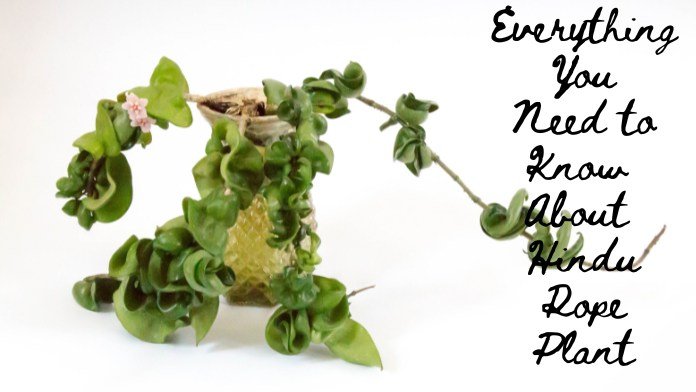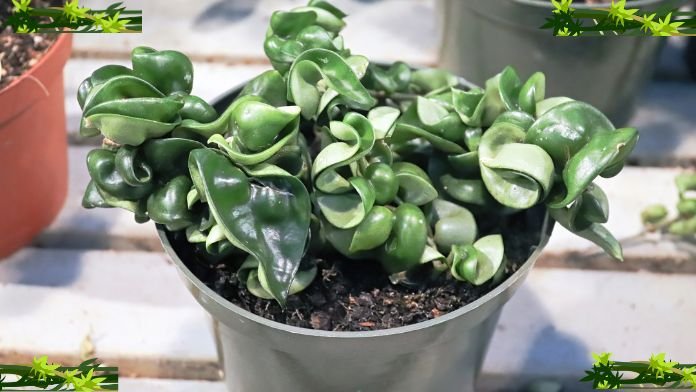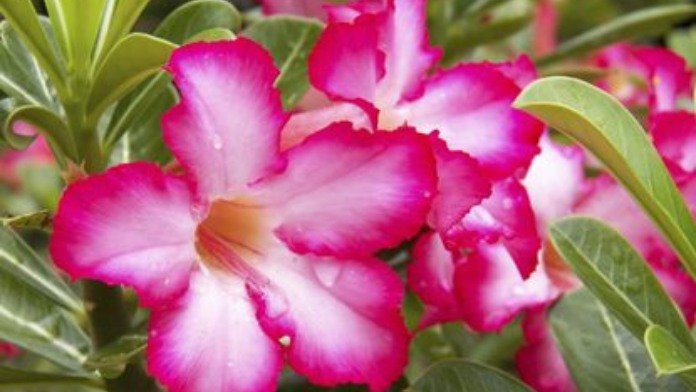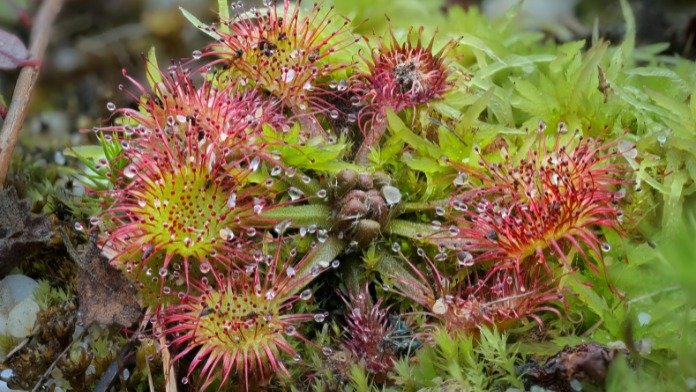
The Hindu rope plant, or Hoa carnosa compacta, is a stunning addition to any indoor garden. With its twisted, curled leaves and star-shaped flower clusters, this unique plant adds an exotic touch to your home.
This semi-succulent, creeper-like species is known for its waxy foliage, unique curly leaves, and bright flowers and is often kept as a low-maintenance houseplant.
What is the Hindu Rope Plant?
Hoa compacta, the Indian rope plant, is a popular tropical vine in East Asia and Australia. They are sometimes called “wax plants” because of their leaves’ glossy, waxy appearance.
Scientific Name and Classification
The Hindu rope plant belongs to the Apocynaceae family and is a variety of Hoya Carnosa, commonly known as the wax plant. Its scientific name, Hoya Carnosa Compacta, reflects its compact, dense growth habit.
History and Origins
Hoya Carnosa Compacta is native to tropical regions of Southeast Asia, including India, China, and Indonesia. In these areas, the plant often grows as an epiphyte attached to trees and thrives in the moist, shady rainforest environment.
The Common Name is Hindu Rope.
The botanical name is Hoya Compacta
- Family Asclepiadaceae
- Plant Type Creeper, Succulent
- Mature size 1-3 feet tall, 1-3 feet wide
- Partial sun exposure
- Soil Type Well draining
- Neutral soil pH
- Flowering time is autumn, spring, summer.
- Pink flower color
- Hardiness Zones 10-11 (USDA)
- Native to Asia
Cultural Relevance
In many cultures, the Hindu rope tree is considered a symbol of good luck and prosperity. Its unique appearance and ease of care have made it a popular houseplant worldwide.
Benefits of Growing a Hindu Rope Plant
It is not considered invasive and is mainly grown in controlled indoor environments or greenhouses. Beyond its visual appeal, the Hoya compact is said to purify the air, remove toxins, and improve indoor air quality.
Air Purification
Like many other houseplants, the Indian rope plant is excellent for air purifying. It helps remove toxins like formaldehyde and benzene, improves indoor air quality, and creates a healthier living environment.
Aesthetic Appeal
The plant’s unique foliage and beautiful flowers make it a standout addition to any room. Its rope-like vines can be trained to grow into various shapes, adding a creative element to your indoor garden.
Low Maintenance
One of the most attractive aspects of the Hindu rope plant is its low maintenance requirements. It thrives on minimal care, making it ideal for busy people or those new to gardening.
Choosing the Right Hindu Rope Plant
Indian rope plants are available with solid green or variegated leaves. This type of hoya plant is straightforward to care for as long as you have plenty of light and are careful with water.
Varieties of Hoya Carnosa Compacta
There are over 2,000 types of hoya plants. Hoya refers to the genus, which has many different varieties. However, Hoya Carnosa is most famous as a houseplant. Several varieties of Hoya Carnosa Compacta have variegated leaves and other flower colors.
When choosing a plant, consider the variety that best suits your aesthetic preferences and growing conditions. They have been decoratively displayed indoors for decades and look especially attractive when used in hanging baskets.
Choose Healthy Plants
When buying an Indian rope plant, look for healthy, vibrant leaves free of blemishes or discoloration. The plant should also have a strong root system and no signs of pests or diseases.
Ideal Growing Conditions

Hindu rope plants thrive in bright, indirect light. They can tolerate low to moderate light but grow best in bright, indirect light.
Direct sunlight can burn its leaves and cause damage. If you place them in low light, they may grow more slowly and produce fewer flowers.
Light Requirements
Hoya Carnosa Compacta thrives in bright, indirect light. It can tolerate low light conditions but may grow slowly and produce fewer flowers. Avoid direct sunlight, which can burn the leaves.
Temperature and Humidity
The ideal temperature range for Hindu rope plants is 60°F to 80°F (15°C to 27°C). Like its native tropical environment, it likes high humidity. Consider using a humidifier or placing the plant in a humid tray in dry climates.
Soil Preference
This plant prefers well-draining soil with potting soil, perlite, and orchid bark. This mixture ensures adequate drainage and aeration, preventing root rot.
Plant your Hindu Rope Plant.
Select a healthy-looking vine and cut off a section with at least two leaves. Cut just below the bottom leaf. Remove lower leaves to ensure a clean stem before rooting. You can root directly in a moist potting mix suitable for cacti or succulents.
The Best Time to Plant
The best time to plant or transplant your Indian rope plant is in spring or early summer when it is actively growing.
Step-by-step planting guide
- Choose a Pot: Choose a pot with drainage holes.
- Prepare the Soil: Mix potting soil, perlite, and orchid bark.
- Planting: Place the plant in the pot and fill around the roots with a soil mixture.
- Watering: Water abundantly, allowing excess water to drain.
Bloom
Hoya compacta, also known as the Indian rope plant, is a distinctive and impressive variety of hoya prized for its unique, curly leaves and stunning, fragrant flowers.
Water Wequired
Select a healthy-looking vine and cut off a section with at least two leaves. Cut just below the bottom leaf. Remove lower leaves to ensure a clean stem before rooting. You can root directly in a moist potting mix suitable for cacti or succulents.
How Often to Water
Water your Hindu rope plant when the top inch of soil is dry. Generally, this means watering once every 1 to 2 weeks. In winter, watering is reduced as plant growth slows.
Signs of Overwatering and Underwatering
Overwatering can lead to root rot, manifested by yellow leaves and a soft stem. Lack of water is evident in dry and shriveled leaves. Adjust your water intake routine based on these symptoms.
Tips for Fertilizing
Select a healthy-looking vine and cut off a section with at least two leaves. Cut just below the bottom leaf. Remove lower leaves to ensure a clean stem before rooting. You can root directly in a moist potting mix suitable for cacti or succulents.
The Best Fertilizer to Use
Use a balanced, water-soluble fertilizer diluted in half. Fertilize once a month during the growing season (spring and summer).
How Often to Fertilize
Fertilize monthly during the active growing season. Avoid fertilizing in the fall and winter when plant growth slows.
Pruning and Maintenance
Select a healthy-looking vine and cut off a section with at least two leaves. Cut just below the bottom leaf. Remove lower leaves to ensure a clean stem before rooting. You can root directly in a moist potting mix suitable for cacti or succulents.
How to Prune Properly
Prune your Indian rope plant to remove dead or damaged leaves and encourage bushier growth. Use sharp scissors to make a clean cut just above a leaf node.
Managing Plant Size and Shape
Regular pruning helps control the plant’s shape and size. Arrange vines around a trellis or other support for an attractive display.
Common Pests and Diseases
These hardy plants are not prone to attract pests. However, a stressed Indian rope plant can become susceptible to mealybugs, scale, or aphids, especially if humidity is not high enough. Consistent care, high humidity, and the use of horticultural oil can help.
Identification of Common Pests
Common pests include mealybugs, spider mites, and aphids. These insects can damage plants by sucking sap.
Preventive Measures and Treatment
Periodically inspect your plants for pests. Treat infestations with insecticidal soap or neem oil. Ensure adequate air circulation and avoid overwatering to prevent fungal diseases.
Methods of propagation
Hindu rope plants are easily propagated from stem cuttings.
Propagation by stem cuttings
- Cut a healthy stem: Select a stem with several leaves and cut just below a node.
- Prepare the cut: Remove the lower leaves.
- Roots: Keep cuttings in water or moist soil.
- Transplant: When roots develop, transplant them into a container with well-drained soil.
Tips for Successful Promotion
Keep the cuttings in a warm, moist environment and out of direct sunlight. Patience is vital, as rooting can take weeks.
Planting and Transplanting of Hindu rope Trees
These plants grow very slowly and like to take root so they won’t need regular repotting. Keeping them in a small container is generally recommended so they do not grow too quickly, and the small size will reduce the risk of overwatering.
Pot
A small hanging pot is ideal for caring for Hoya compactors. Just make sure the roots have room to breathe, and the bottom of the pot has drainage holes.
Repotting
Frequent replacement of Hoya Compact is optional. It can survive for years in the same container unless the roots are compressed or the soil no longer drains well.
If this happens, transplant the plant into a pot that is only two inches larger than the original. Shake off excess soil from the roots and trim any dead ones before repotting.
Hindu Rope Type
- H. There are many cultivars of Carnosa, but only a few species of the Indian rope are known. A few different cultivars of the Hindu plant have recently emerged among homebrew enthusiasts, and the popularity of the Hindu plant may soon increase.
- Hindu ‘Regalis’ has white variegation on leaf margins, H. Similar to carnosa ‘Crimson Queen’ but H. Compactor with curly leaves.
- Rope ‘Mauna Low’ has a cream-colored interior variety, which H. Similar to carnosa ‘Crimson Princess’ but H. Compactor with curly leaves.
- H. Compacta ‘Jodie’s Silver’ has lighter foliage and the famous “splash” pattern found in other Hoya species such as H. publicly ‘Splash.’
Common Problem Solving
Waterlogged conditions are a significant problem for this species, causing flower drop and root rot. The need for careful watering of this plant cannot be underestimated. Otherwise, Hindu rope can handle many common problems.
Yellow Leaves
Yellow leaves can indicate excess water or nutrient deficiency. Adjust your watering schedule and consider fertilizing as needed.
Physical Development and Growth
Growth can be stunted due to insufficient light, poor soil, or pests. Ensure the plant gets enough light, is in well-drained soil, and is free of pests.
Seasonal Care
Reduce watering in winter when plants are not actively growing. Temperature and Humidity: Keep your Hoya Compact at an average room temperature, between 60°F and 85°F (15°C – 29°C).
Winter Care Tips
In winter, reduce watering and maintain a stable temperature. Avoid placing the plant near cold drafts or hot vents.
Summer Care Considerations
In summer, increase the humidity and ensure the plant does not get direct sunlight. Also, watch out for insects, which are more common in warmer weather.
Conclusion
Growing an Indian rope plant can be a rewarding experience. Its unique appearance and minimal care requirements make it a fantastic addition to any indoor garden. By following the tips and guidelines provided, you will enjoy a healthy, thriving plant that will enhance the aesthetics of your home.
RELATED POSTS
View all


